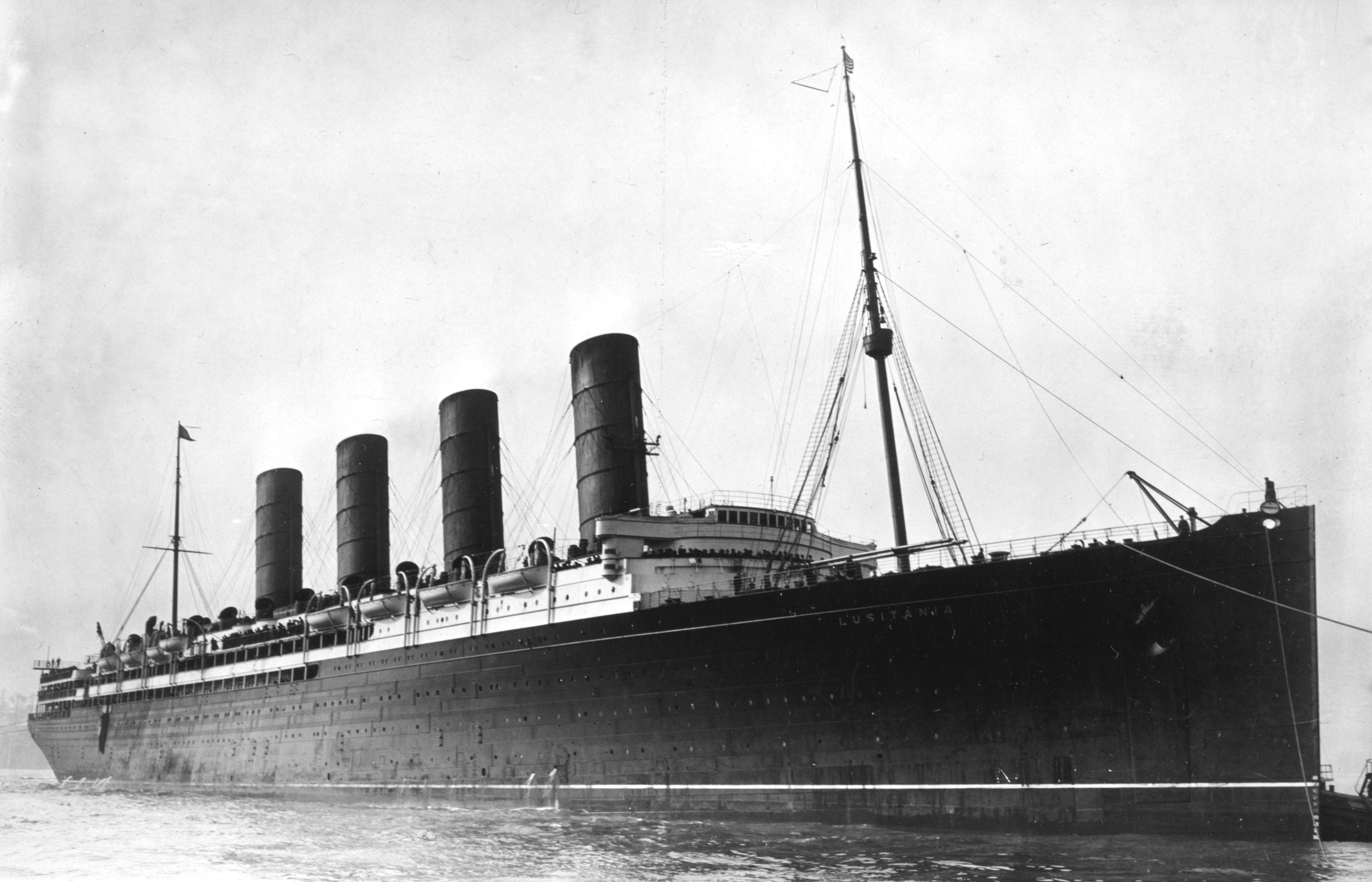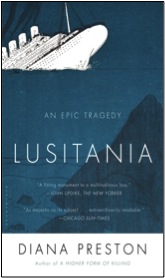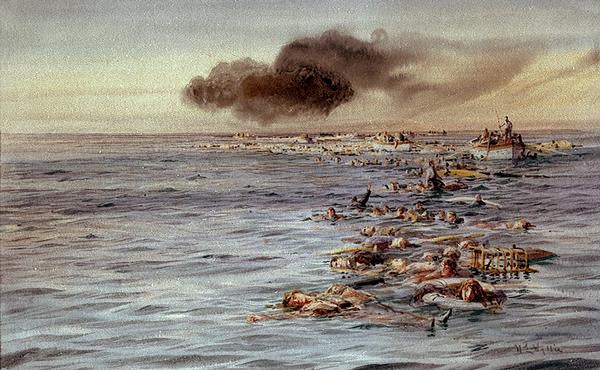By Diana Preston (Guest Contributor)
At 2.10 pm on 7 May 1915 off the southern Irish coast the German submarine U-20 fired a single torpedo at the British Cunard liner RMS ‘Lusitania’. Eighteen minutes later the 30,000 ton vessel slid beneath the waves with as one survivor recalled ‘a long, lingering moan’. Among the  1198 killed were 128 citizens of the still neutral United States. Their deaths in an attack illegal under international maritime law and which the ‘New York Nation’ condemned as ‘a deed for which a Hun would blush and a Barbary pirate apologise’ soured already strained relations between the German and the United States governments and fueled bitter diplomatic exchanges about the German campaign of attacking merchant shipping without warning. In April 1917 these culminated in the United States’ declaration of war.
1198 killed were 128 citizens of the still neutral United States. Their deaths in an attack illegal under international maritime law and which the ‘New York Nation’ condemned as ‘a deed for which a Hun would blush and a Barbary pirate apologise’ soured already strained relations between the German and the United States governments and fueled bitter diplomatic exchanges about the German campaign of attacking merchant shipping without warning. In April 1917 these culminated in the United States’ declaration of war.
The bigger geopolitical story with its background of intrigue, spying and code breaking and – after the sinking – cover-up of the true facts by both the British and German governments fascinated me. However, it was small details in my research which helped me understand just a little of the human tragedy of the victims and their families. Among such poignant detail was a notice placed by an anxious mother in the window of a house in Cobh where survivors were landed:
‘Missing, a baby girl, 15 months old. Very fair curly hair and rosy complexion. In white woollen jersey and white woollen leggings. Tries to walk and talk. Name Betty Bretherton. Please send any information to Miss Browne, Queen’s House.’
Wading into the sea near Cobh at the same time of year as the sinking, I found the water at 2oF very cold. Within five minutes I was shivering, within ten feeling numb and within fifteen back on the beach thinking about the traumatized people shivering in the water for three hours, clinging to wreckage.
Tipping buttons and small pieces of clothing cut from the garments of unidentified victims from dusty boxes in the Cunard archives in Liverpool and reading letters in the same boxes from passengers’ families seeking information and describing birthmarks, moles and scars to aid identification truly moved me, bringing home that these were real people just like myself.
What a large part luck (bad) can play in a disaster also struck me. If the morning of 7 May 1915 hadn’t been foggy, the ‘Lusitania’ would have been past Cobh and out of danger by early afternoon. If her captain hadn’t decided to take a four point bearing to fix her position accurately she wouldn’t have been travelling slowly in a straight line when attacked.
Also, the run time of the torpedo – with the diameter of a steering wheel and longer and heavier than an automobile – was only thirty-five seconds. Given the Lusitania’s speed, if the missile had been fired just five seconds earlier or twenty seconds later it would have missed entirely and the liner would have sailed serenely on. Instead it struck one of her most vulnerable points, near a major bulkhead, ripping a hole in the longitudinal starboard bunker. Arcing helplessly out of control and continuing to make way, the ‘Lusitania’ ploughed into the sea.
All these details impressed upon me the abiding significance of the simple Gaelic inscription on the monument to the disaster in Cobh: ‘Peace in God’s name.’
 Diana Preston is an acclaimed historian and the author of A Higher Form of Killing, Before the Fallout: From Marie Curie to Hiroshima (winner of the Los Angeles Times Book Prize for History), The Boxer Rebellion, and The Dark Defile: Britain’s Catastrophic Invasion of Afghanistan, 1838-1842, among other works of narrative history.
Diana Preston is an acclaimed historian and the author of A Higher Form of Killing, Before the Fallout: From Marie Curie to Hiroshima (winner of the Los Angeles Times Book Prize for History), The Boxer Rebellion, and The Dark Defile: Britain’s Catastrophic Invasion of Afghanistan, 1838-1842, among other works of narrative history.
W&M is excited to have three (3) copies of Lusitania: An Epic Tragedy in this month’s giveaway! Be sure to enter below by 11:00pm EST on May 31st to qualify (your entry includes a subscription to W&M Monthly).
Please note that, at this time, we can only ship within the US.

